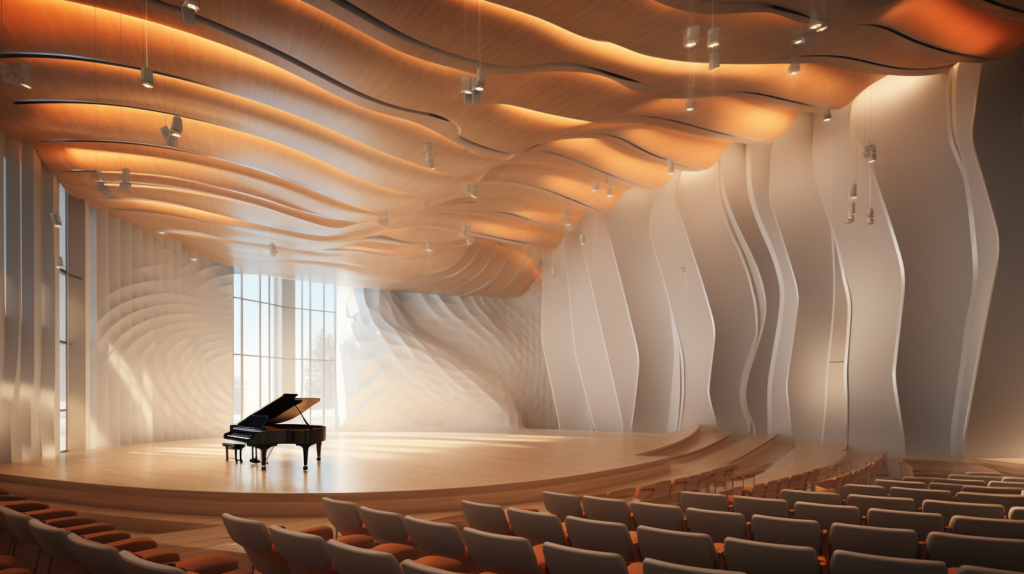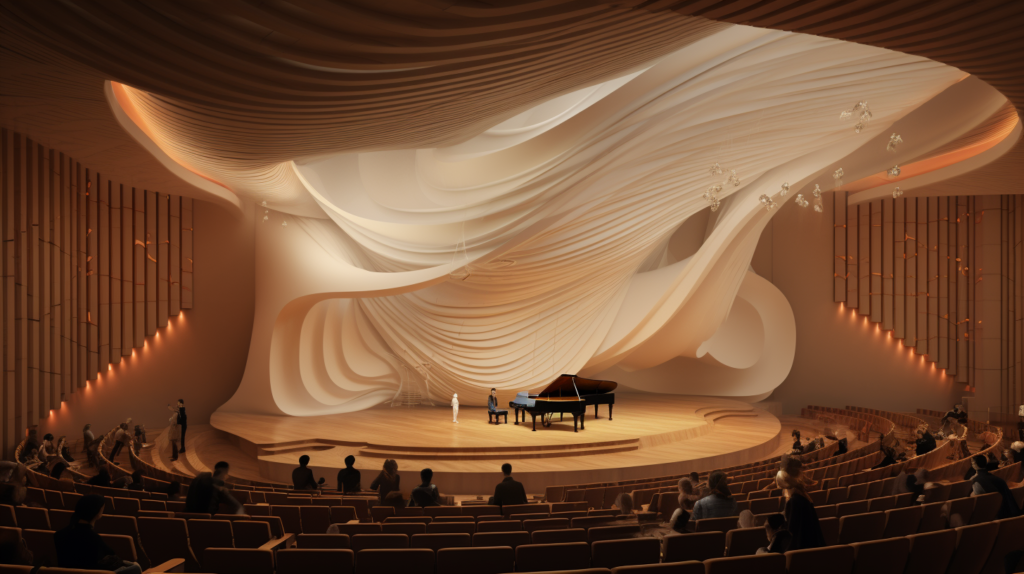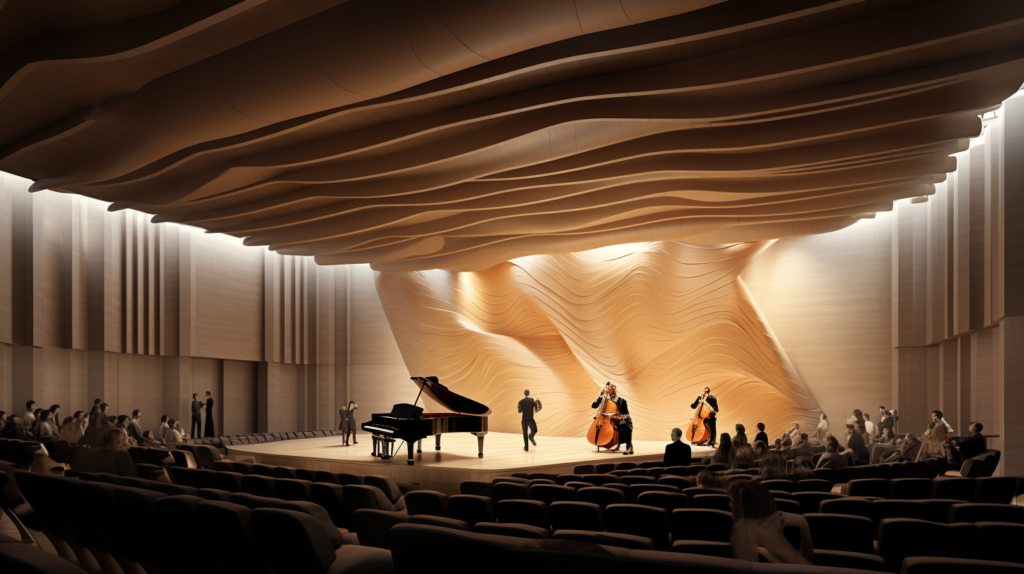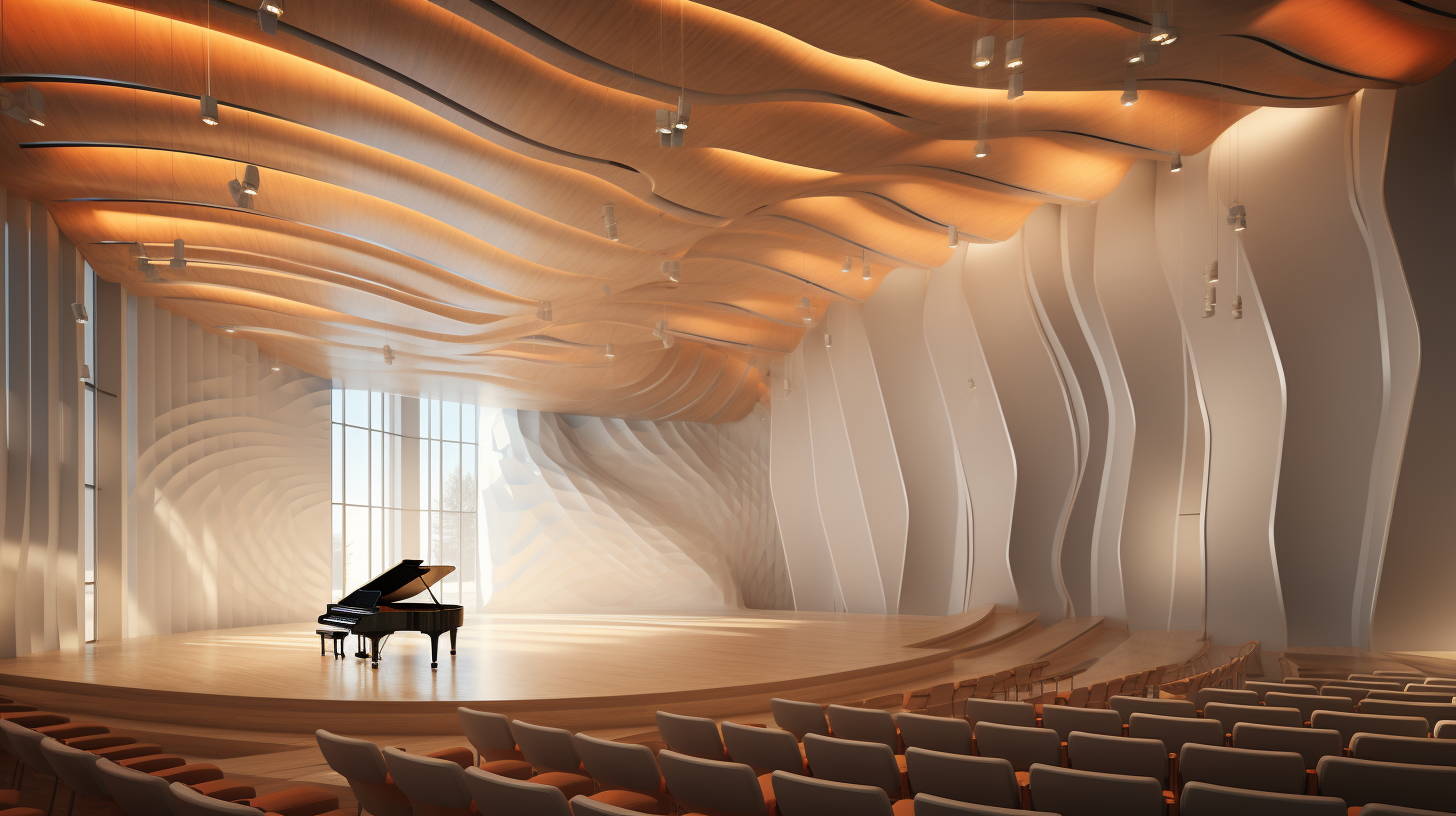Ever been to a live concert that gave you goosebumps? That’s the power of impeccable sound.
This blog post will uncover the often-overlooked role of acoustic panels, particularly polyester acoustic panels, in creating those unforgettable concert experiences.
So why should you care about concert hall acoustics? Because it’s the invisible thread that weaves an emotional tapestry around each performance.
Let’s dive into the fascinating world of sound quality in concert halls.
What Makes Sound Quality So Important in Concert Halls?

In the realm of live performances, the concept of an “immersive experience” has gained substantial traction over the years.
This isn’t just a fleeting trend but a reflection of an evolving audience’s expectations. Sound quality acts as the linchpin that holds this immersive experience together.
When one attends a live concert, the goal isn’t merely to hear but to feel the music in a palpable way.
This emotional connection can only occur in an acoustic environment that has been meticulously designed for optimum sound quality.
Concert halls are architectural marvels that are not just built to be visually appealing but are also designed with the science of sound in mind.
From the materials used in construction to the very shape of the room, every detail is fine-tuned to create the perfect acoustic setting.
Acoustic panels act as the final layer, fine-tuning this environment to create a space where every note reaches the audience not just audibly but emotionally.
These panels are the hidden heroes of concert hall design, providing that final touch that turns a good acoustic environment into a great one.
Why Do Audiences Care About Sound Quality in Concert Halls?

Audiences today are more sophisticated and discerning than ever before. Advances in technology have given people access to high-fidelity sound systems and top-of-the-line headphones.
These tools have raised the bar for what audiences consider to be good sound quality. When people attend a live concert, their expectations are significantly heightened.
They aren’t just there to hear a live rendition of their favorite songs; they are there for an experience that they can’t replicate at home.
In this context, the concert hall becomes a temple of sorts, a sacred space where the acoustic environment has to be nothing short of divine.
The audience expects, and rightly so, that every corner of the hall, from the front row to the last seat in the balcony, offers a pristine listening experience.
This level of auditory perfection is possible only with a well-designed acoustic environment, of which acoustic panels are an integral part.
In essence, audiences care about sound quality because it is the medium through which the performance connects with them, making or breaking their live concert experience.
How Do Acoustic Panels Improve Sound in Concert Halls?

If you were to step inside an empty concert hall, you might be struck by the profound silence that envelops the space.
It’s a stillness that almost feels deliberate, as if the room itself is holding its breath, waiting for the next note to be played.
This quietude is by no means accidental; it’s the result of carefully engineered acoustic panels doing their work even when the hall is devoid of an audience and performances.
Acoustic panels operate on multiple fronts to manage the acoustics of a concert hall. First, they absorb excessive sound, eliminating the echoes and reverberations that can muddy the sonic landscape.
But they do more than just absorb; they also diffuse sound, scattering it in various directions to create an acoustically balanced environment.
The result is a space where sound is not just heard but felt, creating an emotionally resonant experience for the audience. Polyester acoustic panels are particularly effective in this regard.
Made from recycled materials, these panels offer exceptional sound absorption and diffusion, making them a popular choice in modern concert halls.
What Types of Acoustic Panels Are Best for Concert Halls?

The question of which acoustic panels are best for a concert hall is not easily answered with a one-size-fits-all solution.
Acoustic needs can vary greatly depending on the size of the hall, the type of performances it hosts, and even the materials used in its construction.
Foam panels, for instance, are excellent for absorbing high-frequency sounds but can be less effective for lower frequencies.
Their appearance can also be less than ideal for a setting that demands aesthetic elegance.
Diffusers are another option, often made from wood or plastic and designed to scatter sound.
While they excel at creating a balanced sound environment, they don’t offer sound absorption, making them less versatile than other options.
This is where polyester acoustic panels shine. These panels provide the dual benefits of superior sound absorption and diffusion while also offering aesthetic versatility.
They can be customized to fit any architectural style, from classical to contemporary, making them an increasingly popular choice for concert halls aiming for both acoustic and visual harmony.
Which Iconic Concert Halls Use Acoustic Panels Effectively?

The art and science of acoustic design have been honed over many years, and some of the world’s most iconic concert halls stand as testaments to this craftsmanship.
For example, the Sydney Opera House is not just an architectural masterpiece; it is also an acoustic marvel.
This concert hall employs a range of acoustic treatments, including polyester acoustic panels, to create a space where every performance is elevated to its highest sonic potential.
Another venue that merits discussion is Carnegie Hall in New York City. Since its inception, Carnegie Hall has set the standard for what a concert hall should be, both aesthetically and acoustically.
Over the years, the hall has been retrofitted with modern acoustic panels to maintain and even improve its legendary sound quality.
These iconic venues serve as a guide for other concert halls, teaching them that the right acoustic treatment can transform a space from merely functional to legendary.
Conclusion
In conclusion, the importance of acoustic panels in concert halls cannot be overstated. As we’ve seen, these panels are vital in creating the immersive, emotionally resonant experiences that audiences crave.
They are the unsung heroes that work behind the scenes, absorbing and diffusing sound to create a balanced acoustic environment.
Concert-goers today are more discerning than ever, with heightened expectations for sound quality that can only be met through meticulous acoustic design.
Different types of acoustic panels serve different needs, and choosing the right one can be a complex task.
However, polyester acoustic panels have emerged as a particularly effective and versatile option, offering both excellent sound control and aesthetic flexibility.
Iconic venues like the Sydney Opera House and Carnegie Hall serve as benchmarks, demonstrating how the right acoustic treatment can elevate a venue from merely functional to world-class.
The journey from choosing the right acoustic panels to installing and maintaining them is a complex but rewarding process.
It’s an investment in the audience’s experience, an affirmation of the transformative power of music, and a commitment to artistic excellence.
In the final analysis, the quality of a concert hall’s acoustics defines its reputation, influencing not just the performers who grace its stage, but also the audiences who leave the venue with unforgettable memories, imprinted not just on their minds but on their hearts.
